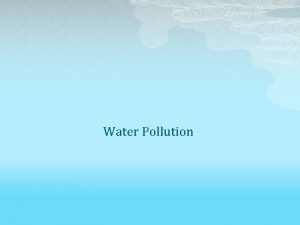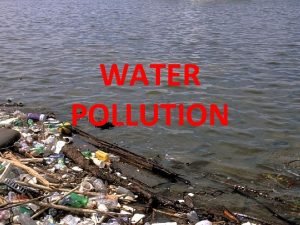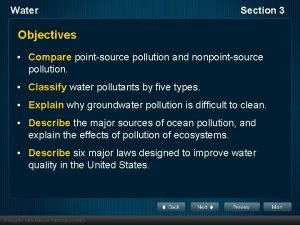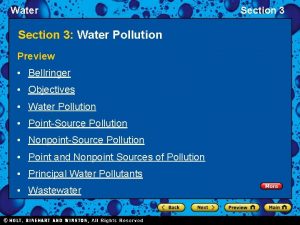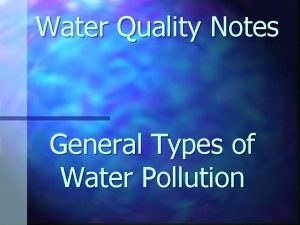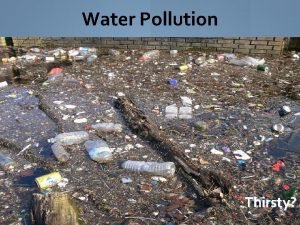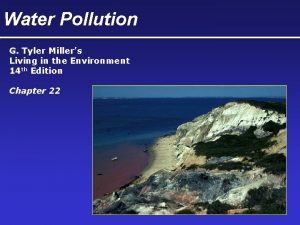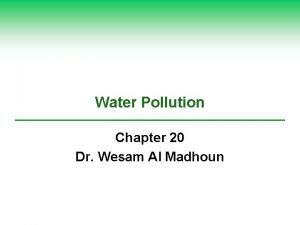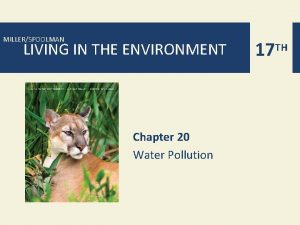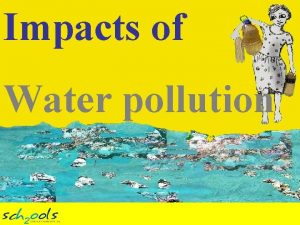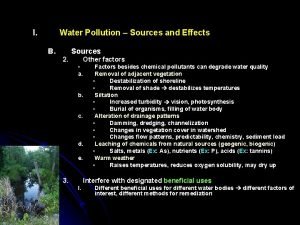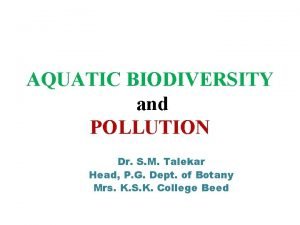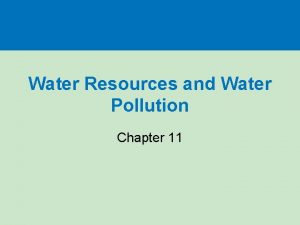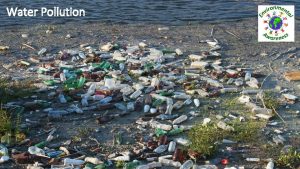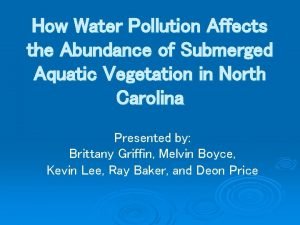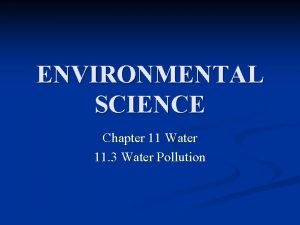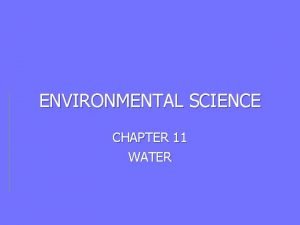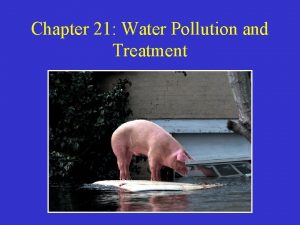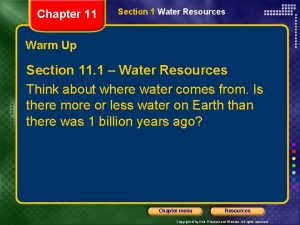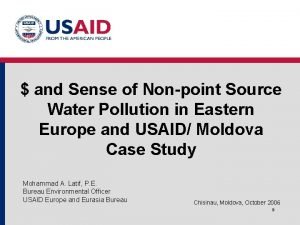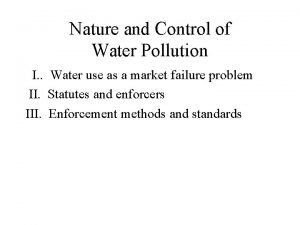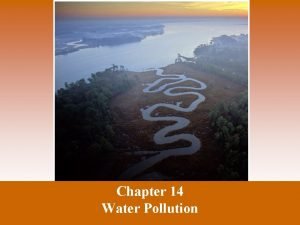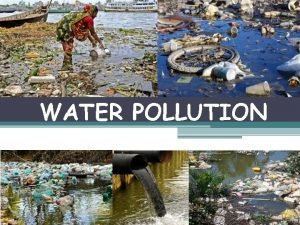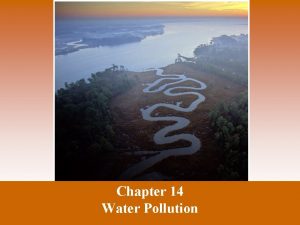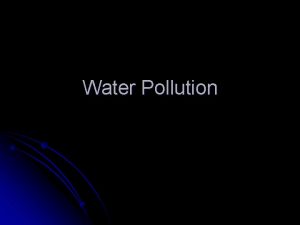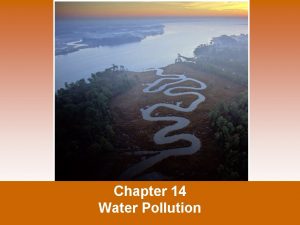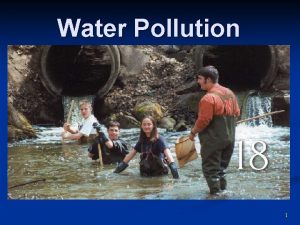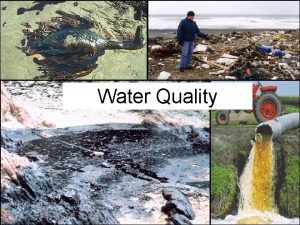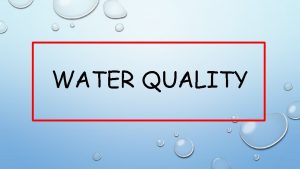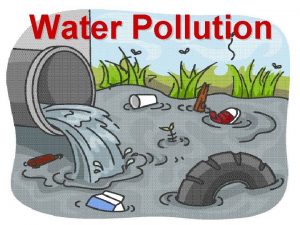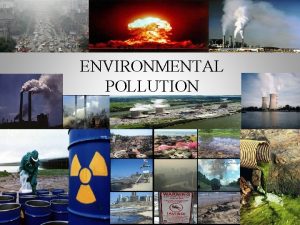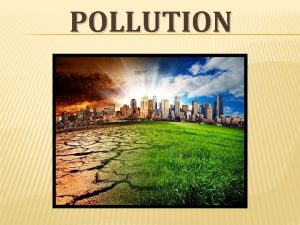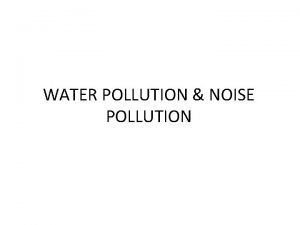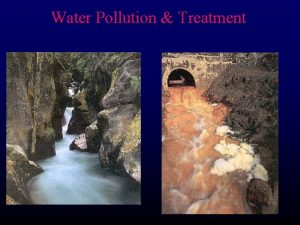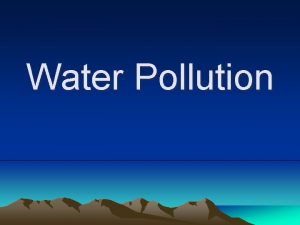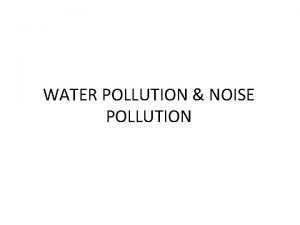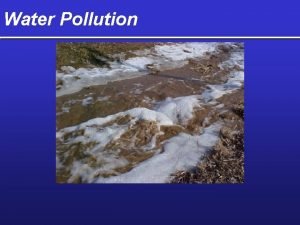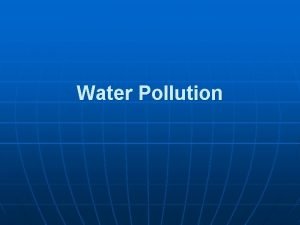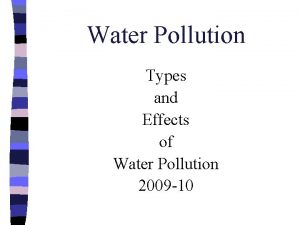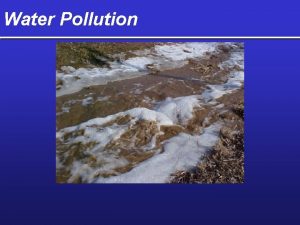Water Quality and Pollution Types of Water Pollution





































- Slides: 37

Water Quality and Pollution



Types of Water Pollution § Point Source Pollution – contaminants have an identifiable source § Smokestacks, car tailpipe § Nonpoint Source Pollution § Contaminant source cannot be found § Several farmlands in the same area

NPS get trapped in the water system and travels long distances § 96% of water pollution is from non-point sources

Major Sources of Water Pollution § Agriculture: by far the leader § Pesticides, fertilizers § Industrial: factories and powerplants § Mining: surface mining toxics, acids, sediment

Video Questions § What are the main sources of nonpoint pollution? § What are some examples of nonpoint source pollutants? § What are some effects of these pollutants? § What are some ways to control this pollution? https: //www. youtube. com/watch? v=Wf. Km. Hl-45 ls







Complete the nonpoint/point source pollution worksheet with partner.

Wastewater Treatment Plants § Water goes to a treatment plant after it is flushed § Not all harmful substances are removed § Industrial wastewater and storm runoff contain toxic substances that aren’t removed


https: //www. youtube. com/watch? v=YMD 8 gb 4 f. TJk

Physical Properties of Water § Water Temperature § Total Dissolved Solids. Combined living and non-living substances dissolved in water § Agriculture § Point Source Pollution § Discharge from sewage treatment plants § Total Suspended Solids-Living and non-living substances suspended in water

Chemical Properties of Water § p. H-Measurement of the hydrogen concentration in water § p. H above 7 = Basic § p. H below 7 = Acidic § Dissolved Oxygen-Amount of oxygen dissolved in water § Low oxygen levels can kill ecosystems

Biotic Index § Biotic Index-Indicates the types of organisms present in an environment § Used to measure water quality of a stream or river § Measures from 1 -10. (Excellent, Good, Fair or Poor)

Eutrophication • Excess nutrients in the water that can cause explosive plant growth • When many plants die, they produce a toxin (red algae) • Decaying plants also reduce the amount of oxygen in the water • Plant growth (like algae) can suffocate other life in a lake or pond.






Waterborne Disease • Number one killer of children worldwide • About 80% of all diseases are water-related (WHO) • Often due to water infiltrated with sewage, spreading disease • Bacteria, virus, or protozoa are responsible –can’t be seen, smelled, or tasted and can be in “clean looking” water • Improvements in disposal and treatment have reduced number of illness in developed nations





http: //abcnews. go. com/2020/video/childrenkilled-waterborne-disease-12428233

Thermal Pollution • Power plants and industries use water in the cooling systems and then discharge the warm water directly into a lake or river • This decreases the amount of oxygen present and aquatic organisms and fish die

Groundwater Pollution • Not as polluted as surface water but harder to clean up • Why? Pollution sticks around- very cold, no bacterial breakdown • Very slow water movement- can take 1001, 000 years • Pollutants can stick to rocks in aquifer and pollute new water

What Pollutes Groundwater?

Sources of Groundwater pollution. . . • • • landfills leaky underground storage tanks mines septic tanks hazardous waste - deep well injection any pollutant in runoff that percolates

Video directions Follow along and answer the questions provided. https: //www. youtube. com/watch? v=mk. Bo. Vfk. OWq. Q
 Water and water and water water
Water and water and water water Types of water pollution
Types of water pollution Perform quality assurance
Perform quality assurance Basic concepts of quality assurance
Basic concepts of quality assurance Plan quality management pmp
Plan quality management pmp Pmbok quality management
Pmbok quality management Quality assurance cycle in nursing
Quality assurance cycle in nursing Compliance vs quality
Compliance vs quality Quality guru
Quality guru Crosby quality is free
Crosby quality is free Old quality vs new quality
Old quality vs new quality 2 causes of land pollution
2 causes of land pollution Land water and air pollution
Land water and air pollution Why is water pollution a great concern in southwest asia
Why is water pollution a great concern in southwest asia Conclusion of pollution
Conclusion of pollution Objective of water pollution
Objective of water pollution Section 3 water pollution answers
Section 3 water pollution answers Sources of groundwater pollution
Sources of groundwater pollution Explain water pollution
Explain water pollution Type of reefs
Type of reefs Three source of water
Three source of water What are the terrible twelve water pollution
What are the terrible twelve water pollution Solutions to water pollution
Solutions to water pollution Control measures of noise pollution
Control measures of noise pollution Methods of water pollution
Methods of water pollution Effects of water pollution
Effects of water pollution Ddt water pollution
Ddt water pollution What are 5 effects of water pollution?
What are 5 effects of water pollution? Groundwater pollution
Groundwater pollution Conclusion of water pollution
Conclusion of water pollution Summary of water pollution
Summary of water pollution Objectives of water pollution
Objectives of water pollution Objectives of water pollution
Objectives of water pollution Source of thermal pollution
Source of thermal pollution Introduction of water pollution
Introduction of water pollution Chapter 11 section 3 water pollution
Chapter 11 section 3 water pollution Observations of water pollution
Observations of water pollution Control measures of water pollution ppt
Control measures of water pollution ppt

